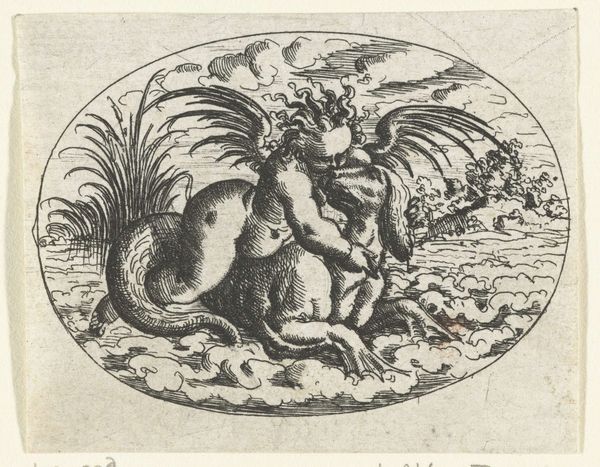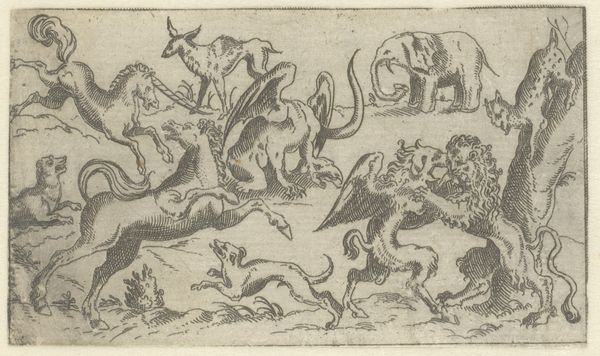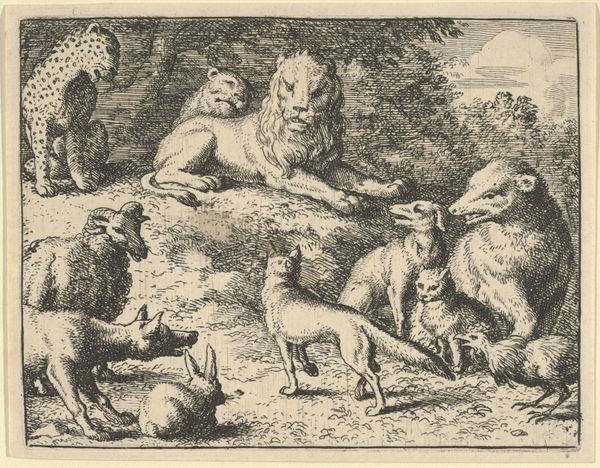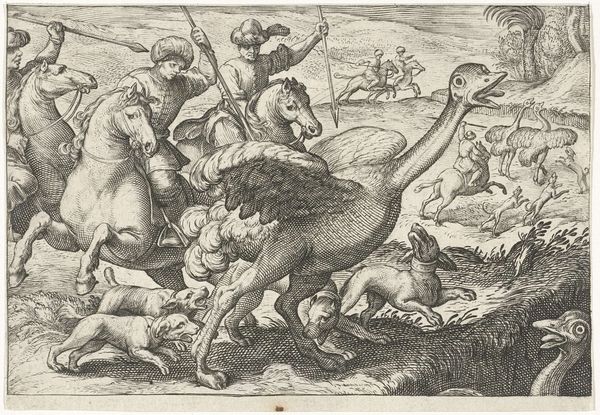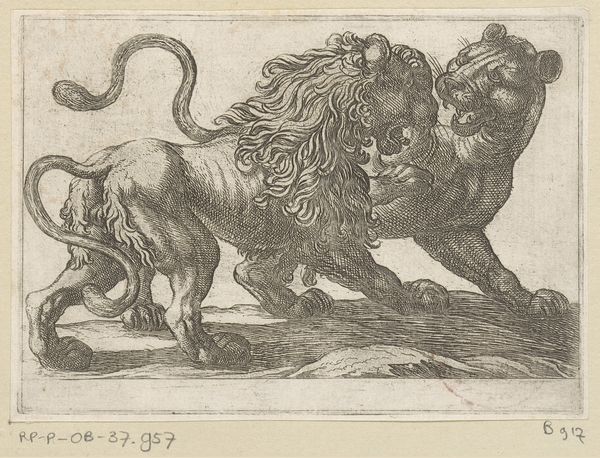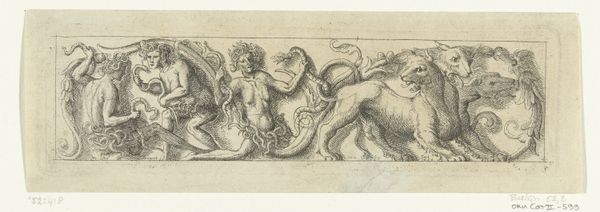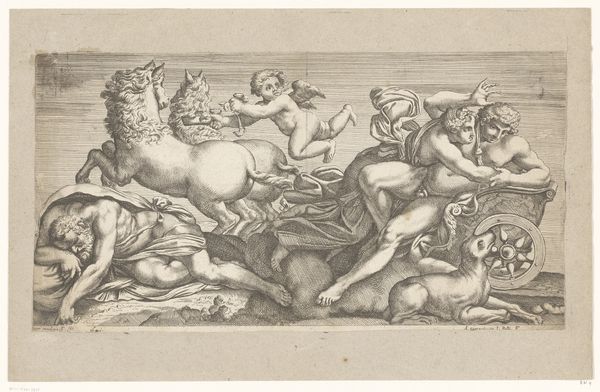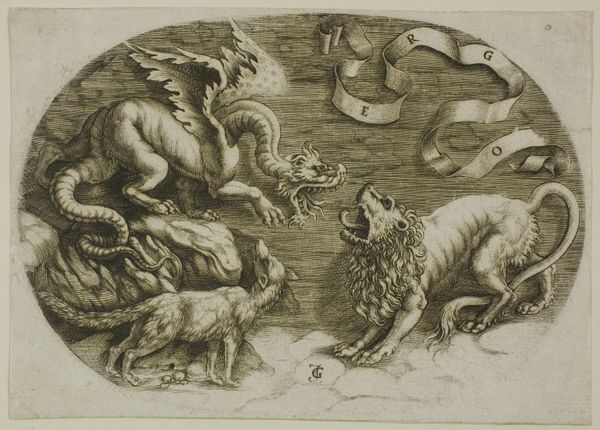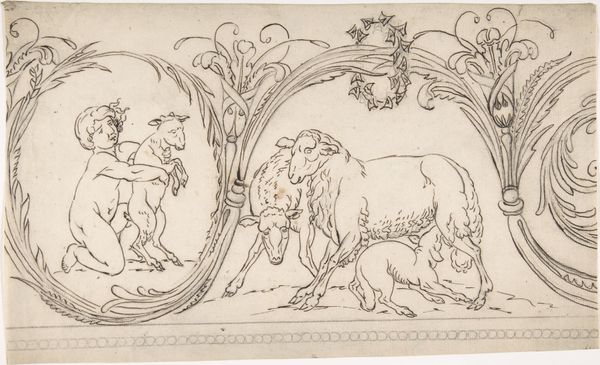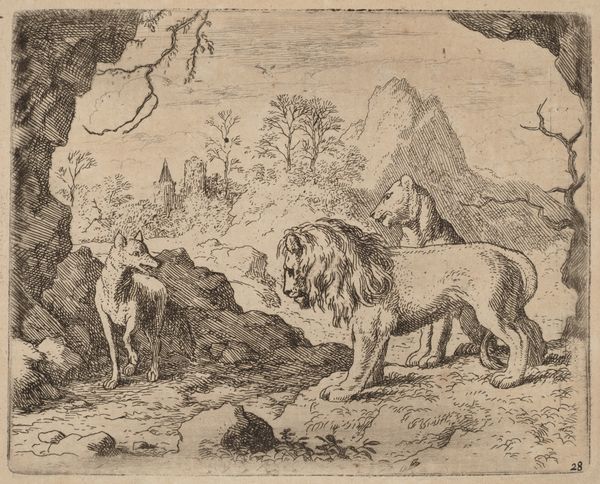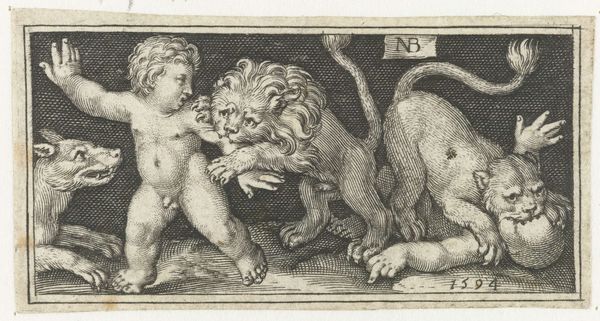
Deel van fries op schouw in Vroedschapskamer van het Stadhuis op de Dam 1663
0:00
0:00
hubertquellinus
Rijksmuseum
drawing, relief, fresco, ink
#
drawing
#
baroque
#
pen sketch
#
relief
#
fresco
#
ink
#
history-painting
Dimensions: height 111 mm, width 394 mm
Copyright: Rijks Museum: Open Domain
Hubert Quellinus created this drawing for a chimney frieze in the Town Hall of Amsterdam. It is a preparatory study for what would become a stone carving. The imagery, teeming with animals and putti, evokes a scene of abundance and plenty. It’s no accident that this celebration of prosperity was intended for the Town Hall. This was the seat of government in what was then one of the wealthiest cities in the world. The Dutch Republic, a relatively new nation in the 17th century, defined itself through its mercantile prowess. The Town Hall itself was a symbol of Amsterdam’s power and prestige. Designed by Jacob van Campen, it was conceived as a monumental structure intended to project an image of stability and civic pride. Quellinus’s frieze, with its classical allusions, would have contributed to this sense of grandeur. To fully understand this drawing, we can look at the Town Hall’s function as a stage for civic life, and we can research the visual vocabulary of Dutch Golden Age art. By studying these kinds of sources, we can better appreciate how art is embedded in its social and institutional context.
Comments
No comments
Be the first to comment and join the conversation on the ultimate creative platform.
